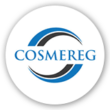Navigating Change: Key Updates in Natural Health Product Labelling Regulations
On July 6th, 2022, Health Canada introduced pioneering labeling requirements under the Natural Health Products Regulations (NHPR). It is a groundbreaking labeling initiative, in alignment with the Self-Care framework, that aims to empower consumers in making well-informed decisions about self-care products.
These regulations not only ensure adherence to established rules for non-prescription drugs and health products but also pave the way for a consumer-centric approach, promoting transparency and consumer empowerment and aligning with standards in other countries like the United States and the European Union.
These amendments and informed decision-making will be implemented on June 21, 2025, following a three-year transition period. NHPs licensed before this date and labeled in compliance with the previous regulations will have an additional three years to conform to the new labeling standards.
In the past, the absence of clear and consistent labeling standards for NHPs led to inconsistencies and potential risks for consumers. The lack of standardized information prevented consumers from making informed choices about these products, resulting in preventable harm.
Key Changes in the Labelling Requirements
One of the key changes is the introduction of the Product Facts Table (PFT), which must now be included on NHP labels. Product Facts Table (PFT) provides standardized information about each product’s ingredients, uses, risks, and other important details.
The information in the PFT must be presented in either a bilingual table or two separate unilingual tables (one in French and one in English). The PFT must be included on the packaging of all NHPs either on the outer or inner label. Manufacturers have flexibility in displaying the PFT, such as using attached leaflets, package inserts, or websites if the available label space is insufficient.
PFT should follow specific formatting guidelines and provide information on:
- “Components/Ingredients
- “Indications/uses”
- “Potential Warnings”
- “How to use”
- “Contraindications”
- “When to consult the doctor”
- “Queries/Questions?”
Exemptions and flexibilities may be available for the PFT under certain circumstances.
Allergen Labelling:
NHPs require the inclusion of allergen information on labels. Manufacturers must disclose the presence of allergens, such as nuts, peanuts, seeds, eggs, fish, shellfish, soy, dairy, and gluten sources, on the product label. If an NHP contains allergens at a concentration of 10 parts per million or higher, they must be highlighted in the “Warnings” section of the PFT. Additional provisions address the labeling of added sulfites and aspartame. Cross-contamination with allergens, gluten, or sulfites does not trigger the allergen labeling requirement.
Addressing Challenges in the Natural Health Products Industry
The natural health products industry is currently facing a challenging period characterized by over-regulation and rapid regulatory changes. Acknowledging these concerns, the Canadian Health Food Association (CHFA) is actively advocating for greater flexibility and a revision of the inflexible guidance surrounding NHP labeling. Collaborative efforts are crucial to strike a balance between regulatory compliance and industry growth. For smooth transition and implementation of these regulations, Natural Health Products Regulations (NHPR) provided three years.
Anticipated Impact of Label Changes
The forthcoming label changes, perceived as restrictive and cost-intensive, have the potential to significantly impact profit margins, necessitate larger packaging sizes, and exacerbate existing supply chain challenges. Moreover, there is a concern that these changes may limit product availability, hinder innovation, and restrict the introduction of new product offerings. It is imperative to find a solution that addresses these concerns while ensuring consumer safety and fostering industry growth.
Key Changes and Implementation Timelines
The revised regulations introduce significant changes to NHP labeling requirements, ensuring consistency and efficacy. The implementation timelines are as follows:
- New Products: Specific aspects of the labeling regulations will undergo a three-year transition period. Starting from June 21, 2025, all newly launched products must comply with the updated labeling requirements.
- Existing Products: To ensure comprehensive compliance across the retail sector, existing products must undergo labeling regulation changes within the next six years. By June 21, 2028, all existing products should be fully compliant with the new labeling requirements.
Synchronizing Monograph Updates for Enhanced Efficiency
The Regulatory Impact Analysis Statement (RIAS) suggests that Health Canada will synchronize monograph updates with the new labeling requirements. This simultaneous review process aims to simplify warnings and precautions as part of the monograph revision. The expected completion of all monographs is within the next three years, creating a streamlined and effective regulatory landscape that supports industry stakeholders.
Promoting Consumer Empowerment and Industry Growth
Through these innovative labeling regulations, Health Canada aims to empower consumers, promote transparency, and drive the growth of the natural health products industry. By striking a delicate balance between consumer safety and industry competitiveness, these changes pave the way for a thriving self-care sector that caters to evolving consumer needs. It is through collaborative efforts and a shared commitment to excellence that the industry can navigate the regulatory landscape while thriving and meeting the needs of consumers.
Cosmereg is a regulatory firm that assists cosmetic producers in their efforts to remain compliant with Canada Health Regulations in terms of new labeling rules .for more information email us.





